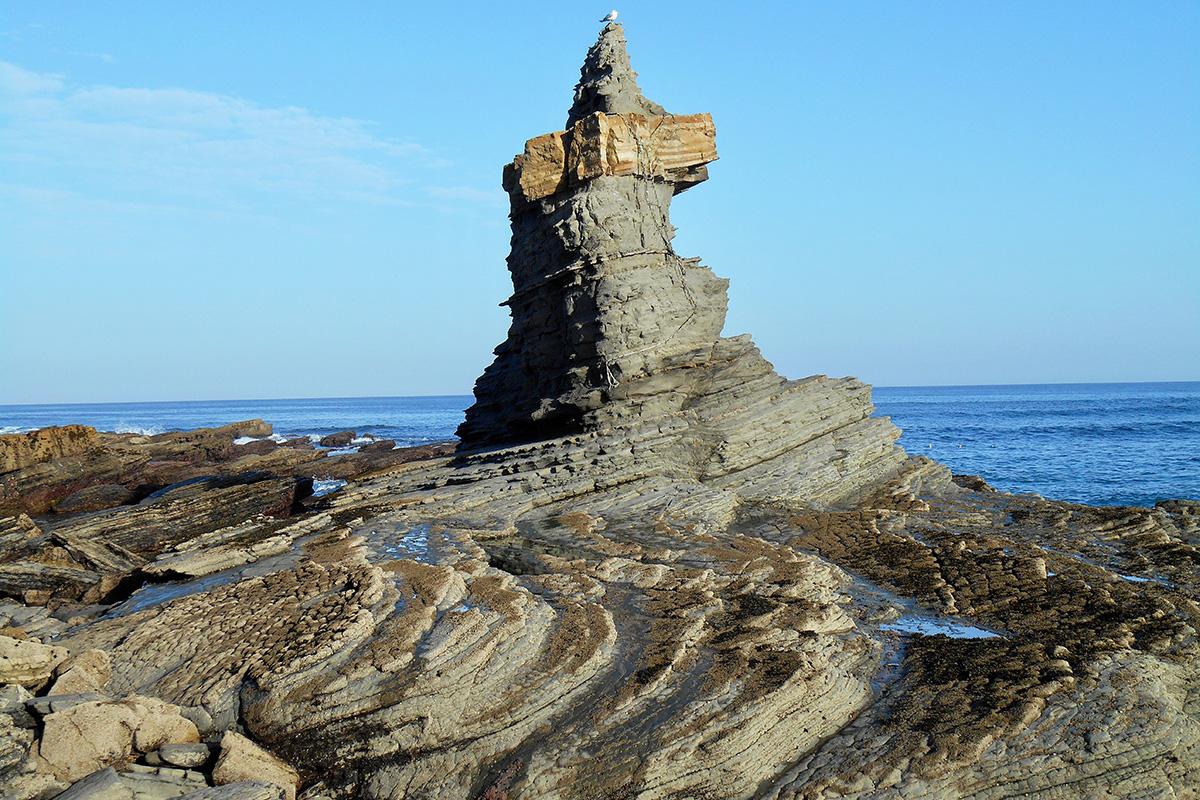Palaeontologists from the Museum für Naturkunde Berlin and colleagues from Great Britain have reconstructed the speed, extent and duration of ocean warming for an exceptionally hot phase of the Jurassic period 182 million years ago and determined negative effects on the biodiversity and body size of inhabitants of the sea floor. Using fossils, the ecological effects of climate change were investigated. In this way, possible long-term consequences of the current global warming can be estimated and recommendations for action for our society can be derived.
It is quite complicated to reliably reconstruct the water temperatures of the Earth's past. The analysis of the ratio of oxygen atoms of different weights proves to be particularly helpful. This ratio is temperature-dependent in the calcareous shells of oysters and other organisms and can be measured by mass spectrometers. In the case of well-preserved fossil shells, the former water temperature can thus be determined by means of a simple mathematical relationship.
Using this method, the researchers from the Museum für Naturkunde Berlin and from Great Britain have determined a relatively rapid rise in temperature about 182 million years ago in the Jurassic period for individual marine areas in southern Europe. The greenhouse phase lasted for several hundred thousand years, with average local ocean warming of 3.5°C and peaks of over 5°C. "Such a complete and reliable temperature reconstruction was not available for this period of time" says Clemens Ullmann from the University of Exeter, who carried out the geochemical analyses.
Martin Aberhan from the Museum für Naturkunde Berlin adds: "The reason for the lack of fossils so far was that the oceans in the period under investigation were generally low in oxygen with very little life on the sea floor and hardly any shells available for geochemical analyses". For this reason, the researchers carried out new fieldwork in Spain and Portugal as part of the project and found fossil-rich deposits originating from oxygen-rich marine areas. Some of the material is now in the research collections of the Museum of Natural History Berlin.
The rise in temperature of the oceans had far-reaching consequences for the marine communities of that time. All the species of brachiopods that lived before the warming – marine animals that superficially resemble mussels but form an independent animal phylum – became extinct in the initial phase of the warming. They were replaced by a small, opportunistic species that was able to survive in these extreme conditions. With the end of the hot phase, completely new mussel-brachiopod communities appeared. In addition, the average shell sizes of the communities were significantly smaller during the warm phase than before and afterwards, mainly because the large species became rarer or disappeared completely.
The decreases in body size are statistically significantly correlated with temperature increases. "In view of the current ocean warming, a similar spread of relatively small invasive species and a long-term reduction in the size structure of communities would be a very alarming sign of progressive global warming," says Martin Aberhan from the Museum of Natural History, who headed the ecological investigations.
Published in:
Piazza, V., Ullmann, C.V. & Aberhan, M. Temperature-related body size change of marine benthic macroinvertebrates across the Early Toarcian Anoxic Event – Scientific Reports 10: 4675. (doi.org/10.1038/s41598-020-61393-5)
Ullmann, C.V., Boyle, R., Duarte, L.V., Hesselbo, S.P., Kasemann, S., Klein, T., Lenton, T., Piazza, V., & Aberhan, M. Warm afterglow from the Toarcian Oceanic Anoxic Event drives the success of deep-adapted brachiopods. – Scientific Reports 10: 6549 (doi.org/10.1038/s41598-020-63487-6)
Photo:
http://download.naturkundemuseum-berlin.de/presse/KlimaerwärmungBrachiopoden
Photo caption: Fossil-rich rock sequences from the Jurassic period, such as here on the coast of Portugal, make it possible to reconstruct in detail earlier climate changes and their effects on life. Foto: Simon Schneider, Cambridge
